Step-by-step guide: How to build your own compass
Become an outdoor survival expert. Learn how to build a functioning compass without equipment and orient yourself safely in the wilderness.
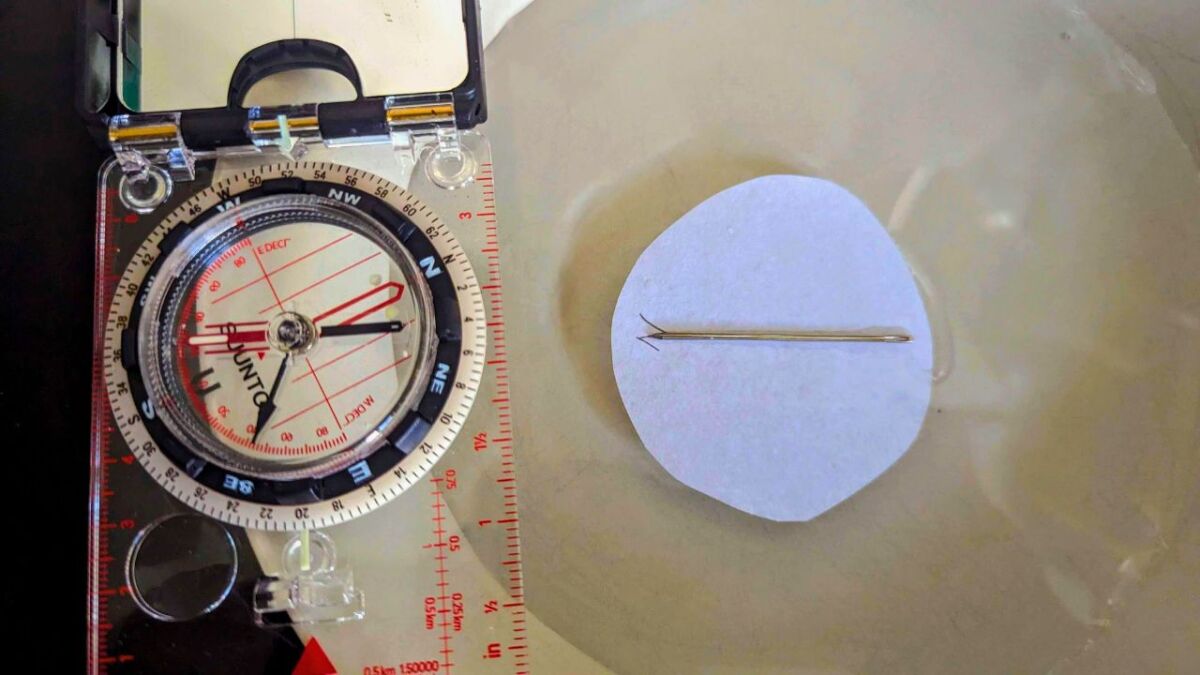

From Martin Gebhardt. Check out my “About me” page.
👉 The key facts from this guide
- You need a needle, a magnet, leaves or paper, and water to build a compass yourself.
- The needle is magnetized and placed on a leaf or paper floating on the water to indicate the north direction.
- The self-built compass always points towards the magnetic north pole, not the geographic North Pole.
- Avoid using the compass near metals or electrical devices as they can interfere with the magnetic field.
- There are other methods of orientation such as navigating with the sun, moon, or stars.
- A self-built compass is a makeshift solution and can be helpful in poor visibility conditions or cloudy skies.
Have you ever been in the middle of the wilderness and realized that your compass is missing? That's a nightmare, isn't it?
You look around, but all the trees look the same. The sun shines equally from all sides, and you can no longer remember which direction you came from.
And then that - your compass is gone. Lost. Broken. Maybe you even forgot it at home. Now you're on your own, in the middle of the wilderness.
But don't panic. Here comes the solution.
I have a step-by-step guide for you on how to build your own compass.
Ready? Then let's get started.
Quick Answer: How do you build a compass?
To build a compass, you need paper/wood, a needle and water. Magnetize the needle by rubbing it on hair/wool or a magnet. Then place them on the paper/wood floating in water. The needle will show you the north-south direction.
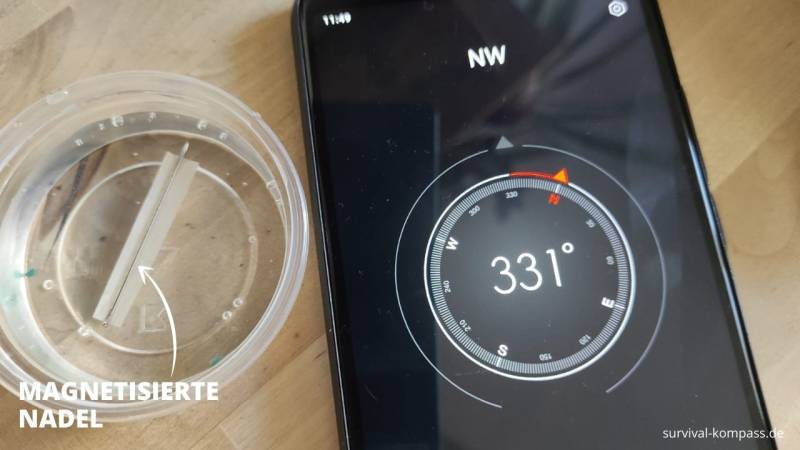
But now let's go into detail so that you also understand the background.
What materials do you need for a self-built compass?
To build a homemade compass, you will need a few materials and tools.
In the following, I will list the necessary materials and describe how you can find them in nature. Sometimes, it's not that easy.
Needles
Needles are the heart of every compass. You can use old needles from an old map or an old compass rose.
If you don't have any old needles on hand but still want to conduct the experiment at home, you can also buy them at a craft store.
Actually, almost any form of needle will do - so make sure you always have one with you.
I, for example, always carry a sewing kit on longer trips, which contains three needles.
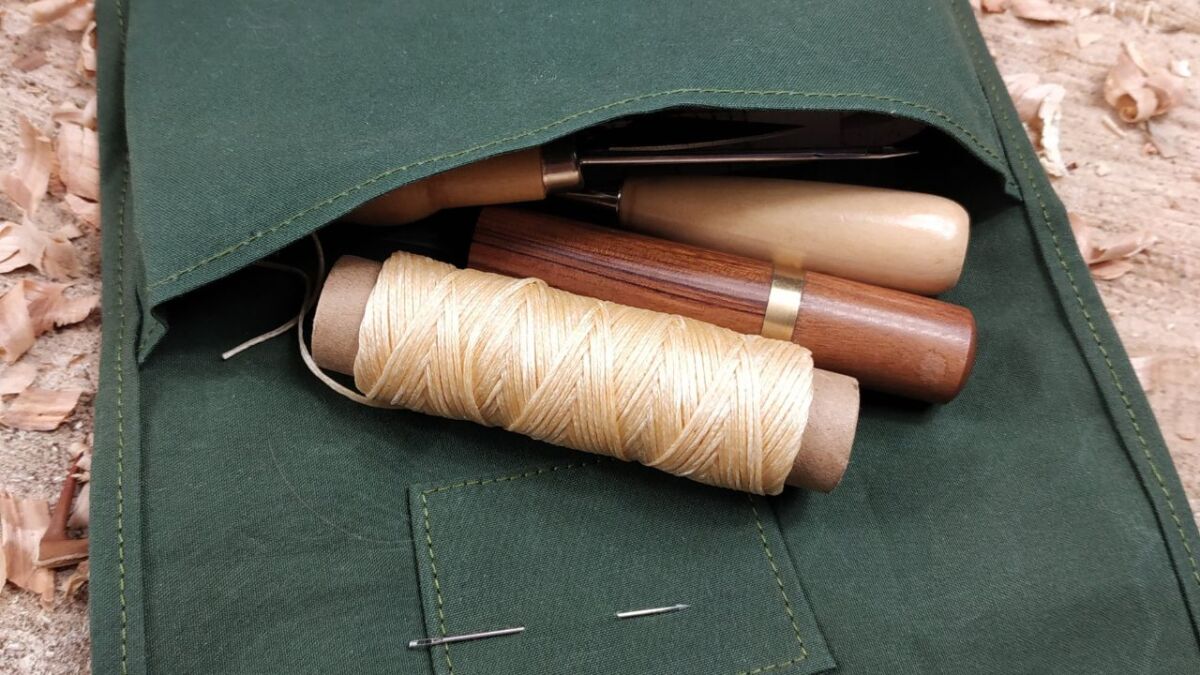
Magnets
Magnets are also important for building the compass. You can either buy a strong magnet from an electronics store or collect a natural magnet like magnetite from nature.
I would rather not lie: finding magnetite can be a challenging endeavor.
Although you definitely have the opportunity to find it at beaches, riverbeds, mining or ore mining areas, or volcanic areas - I advise you to get magnets from a specialty store in advance.
Leaves or Paper
Leaves or paper let the needle float at the end of the day.
You can make a paper or leaf bowl by cutting out a circle from paper.
Instead of using leaves or paper, you can also use thin birchbark or palm leaves.
Self-explanatory, water is also necessary to make the needle float.
Water can be found in lakes, rivers, wells, and springs. Of course, you can also use your own brought water.
But don't be wasteful, you will certainly need your drinking water.
Here's the overview again:
| Material | Usage |
|---|---|
| Needle | Serves as the arrow of the compass. It is magnetized to indicate the north direction. |
| Cork or leaf | Serves as a floating platform for the needle. |
| Small water container | Represents the surface on which the homemade compass will work. |
| Magnet, silk, or wool | Used to magnetize the needle. A magnet is ideal, but if none is available, wool or silk can also magnetize the needle through friction. |
Overall, it is not difficult to find the materials and tools you need to build a homemade compass.
With a little creativity and patience, you can collect most materials from nature or buy them at a craft store.
I always recommend that you prepare yourself as well as possible in advance.
How to build a compass in the wilderness?
It's basically not difficult. Here's how:
- Gather all the materials: needle, paper, bowl of water.
- Touch the tip of your needle to the south pole of the magnet. Then touch the eye of the needle with the north pole of the magnet.
- Find a leaf, or simply a lightweight, floating object - not metallic, of course.
- Place the needle on the leaf. Let the homemade compass float in a puddle of water.
- Let the needle align itself and you will see that it points north.
You can also use a small piece of wool or silk to magnetize the needle properly.
In this one, you can rub the needle back and forth about 100 times until it becomes magnetic.
In addition, you can use two batteries, a wire, and the needle to create a closed circuit. Afterward, the needle will be magnetized.

Why does a homemade compass work at all?
A self-made compass works due to the magnetic properties of a needle.
Needles are made of a ferromagnetic material that is attracted by an external magnetic field.
If you let a needle swing freely, it points in the direction of the magnetic field.
And the good thing is: In the wilderness, you can use this feature to build a compass.
What is the magnetic North Pole and the geographic North Pole?
It is important for you to understand that the needle always points towards the magnetic North Pole, not towards the geographic North Pole.
The magnetic North Pole is the point where the magnetic field lines emerge perpendicularly from the Earth's interior.
The geographic North Pole, on the other hand, is the geographic point on the Earth's surface that lies on the axis of Earth's rotation.
The deviation between the two poles is called magnetic declination and can vary depending on location and time.
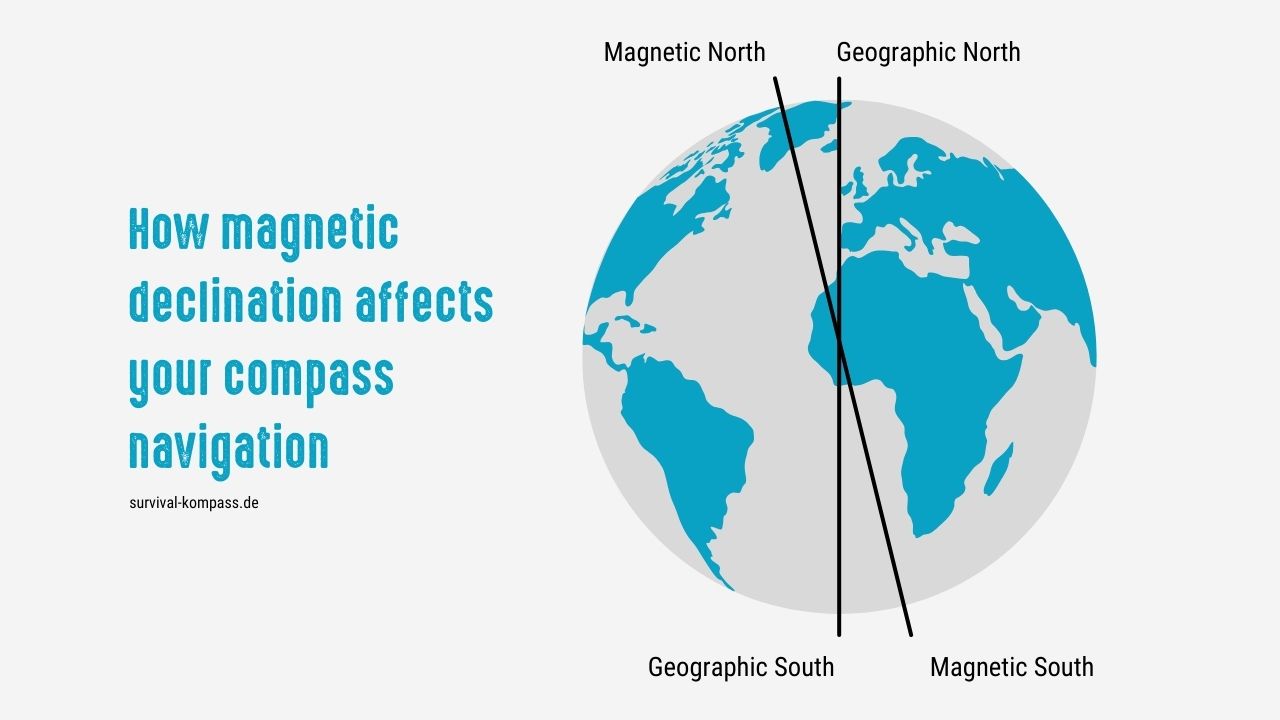
Polarity of North and South Pole
Another essential factor when building a homemade compass is the polarity of the North and South poles.
Just like a magnet, a needle has a north and a south pole.
When an external magnetic field acts on the needle, the north pole is attracted and the South Pole is repelled.
This results in the needle aligning itself in a specific direction and can be used as a compass.
By aligning the needle towards the magnetic North Pole, you can get a rough orientation in the wilderness.
However, it is important to note that magnetic declination can affect the accuracy of the homemade compass and there are other factors that can make navigation in the wilderness more difficult.
But now enough of complicated functional mechanisms and geography. All you need to know is that the thing also works.
4 Tips, Tricks, and Precautions
- To be more precise, you should know and consider the magnetic declination.
- Do not use the compass near metals or electrical devices as they can interfere with the magnetic field.
- If you are near the equator, the compass needle is less reliable.
- Use the homemade compass only as a rough guide and do not rely solely on it for wilderness navigation.
Other methods of orientation
I can still remember a campfire story. A former scout who once got lost told:
"I was alone and quite far away from the nearest village. Luckily, I remembered the survival techniques I had learned, including how to build a compass. I found a small stream, and thanks to my woolen jacket, I was able to magnetize the needle. It wasn't precise navigation, but it helped me find the right direction and not wander further into the unknown."
There are various methods of wilderness navigation that does not rely on a compass.
Navigation using the Sun
One of the most well-known methods is navigation using the sun. The sun moves from east to west during the day, rising in the east and setting in the west.
If you observe the position of the sun in the sky, you can get a rough idea of the direction.
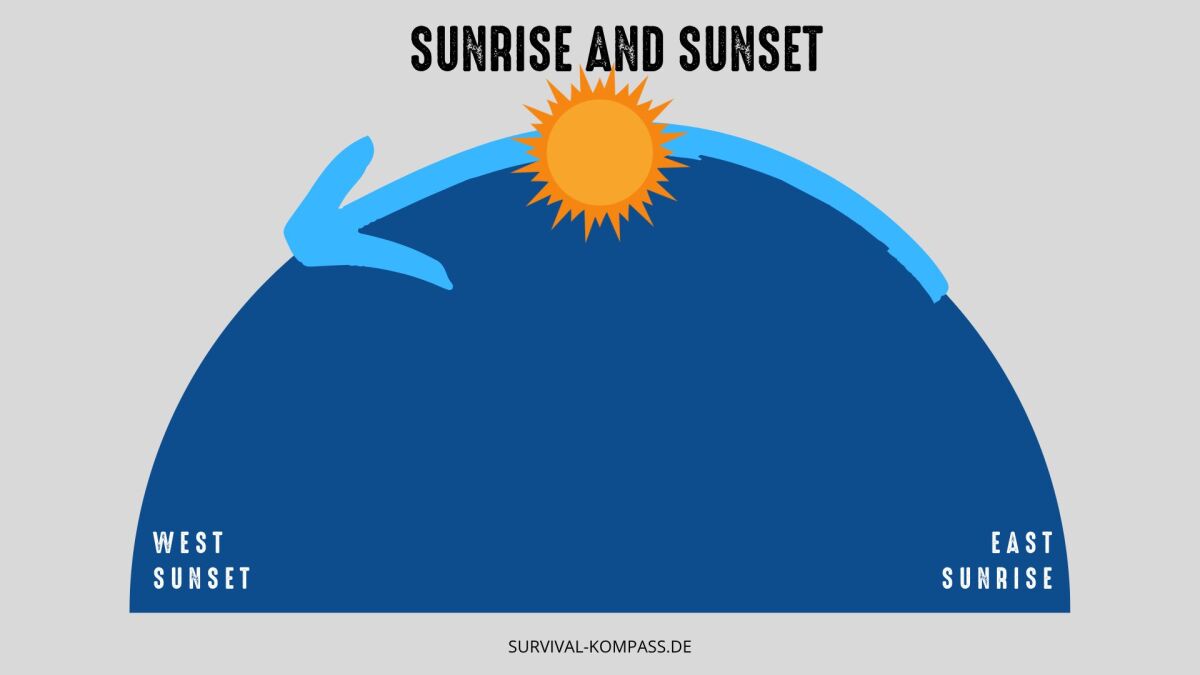
Navigation using the Moon
Another possibility is navigation using the moon. The moon also moves from east to west during the night and changes its position in the sky.
So, also observe the position of the moon in the sky to estimate the cardinal directions. The full moon is particularly helpful as it provides you with bright and clear illumination.
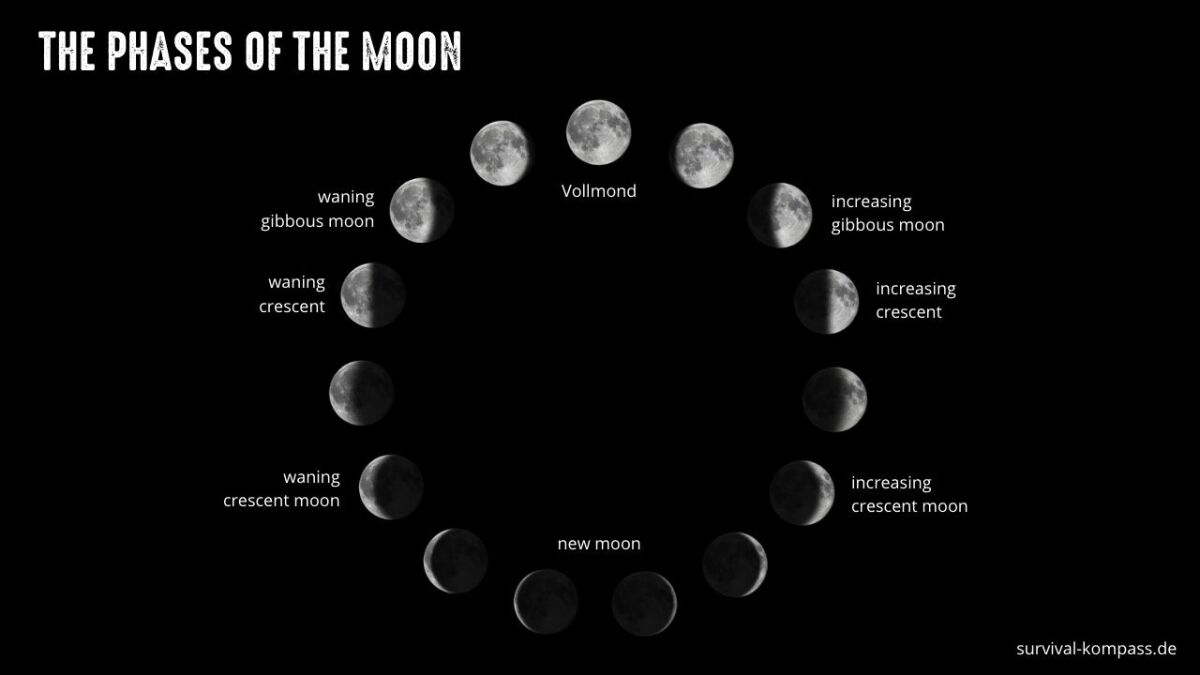
Navigation using the stars
Furthermore, navigating using the stars is one way to orient yourself in the wilderness.
Every star has a specific position in the sky and moves in a specific way.
The principle is the same as with the sun and moon - observe the position and movement of the stars to get the clearest possible picture of the directions.
Especially helpful are the Polar Star and the constellation of the Big Dipper.
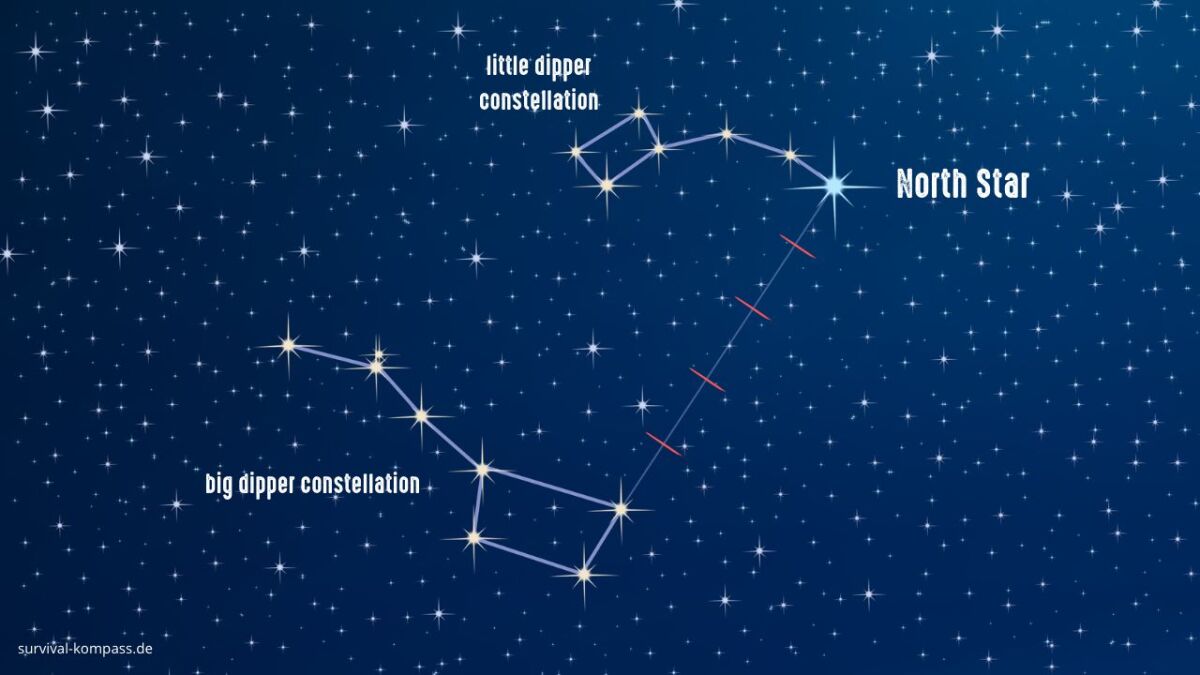
The advantage of these alternative navigation methods is that you don't need any tools or materials to apply them.
However, their effectiveness strongly depends on the weather conditions, especially in cloudy or poor visibility it can be difficult to determine the position of the sun, moon, or stars.
I have described all methods in detail and also created corresponding graphics for you. In my guide "Navigation and Orientation without a Compass - These 11 methods will safely help you determine the cardinal directions", you will learn everything about it.
In comparison, a homemade compass offers a more reliable way to orient oneself, especially in poor visibility or cloudy skies.
Another disadvantage of alternative navigation methods is that they require a certain level of experience and knowledge to be able to apply them effectively (as practice beforehand!).
Ultimately, the choice of navigation method depends on individual needs and experiences.
It also makes sense to combine different methods to obtain a more accurate orientation.
It is important to always be aware that every navigation method has its limits, and it is always advisable to have a map and compass as a backup.
How to navigate with a map and compass, I will show you in the guide "How to use a compass with a map?". I have also included a video.
Conclusion: A wilderness compass is only a last resort
In summary, it can be said that the general ability to navigate in the wilderness is a significant skill for any adventurer.
A homemade compass can be a useful method for navigating in an emergency situation.
But there are other methods like navigation with the sun, the moon, or the stars.
In the best-case scenario, you prepare responsibly before every survival adventure by learning the necessary skills and having the right equipment with you.
A good preparation can mean the difference between life and death in an emergency - as I have already emphasized in other articles.
I also recommend creating an equipment checklist and skills and familiarizing yourself with various navigation methods.
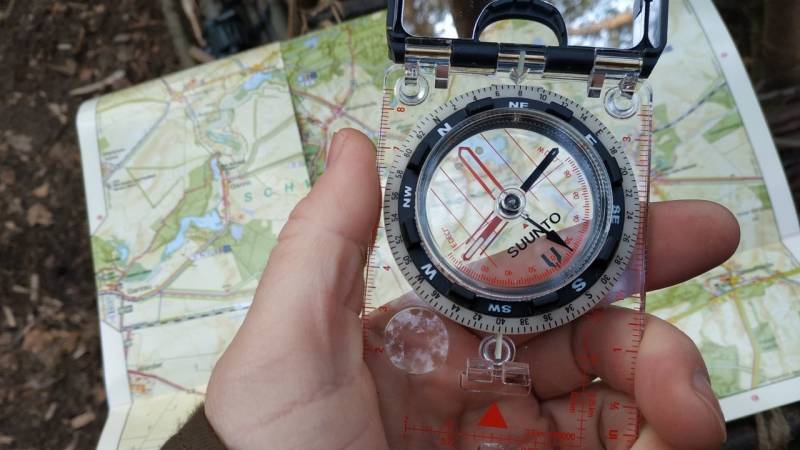
It is also important to always inform someone about your travel plan and the expected time of return - even if you don't plan a long absence.
I hope this article has helped you prepare for potential emergencies in the wilderness and provided you with valuable information on wilderness navigation.
What you can do now to apply or deepen the knowledge:
- Build your own compass alone or with your family. Children like the experiment very much.
- I recommend my guide "Navigation and Orientation without a Compass - These 11 Methods Will Help You Determine the Cardinal Directions Safely".


Author of the guide
Martin Gebhardt
Hey, I'm Martin. On my blog, you will learn the basics and numerous details about living in the wild. I think survival, bushcraft and the good life in nature are the keys to happiness. Find me here on Instagram or on YouTube. You can find more about my mission on the About Me page.
Was this guide helpful?
15 people found this guide helpful.
5.00 out of 5 points (15 Ratings)
Comments (0)
This post may contain affiliate links. So if you click on the links and make a purchase, I will receive a small commission at no additional cost to you. Click here, to learn more about it.



